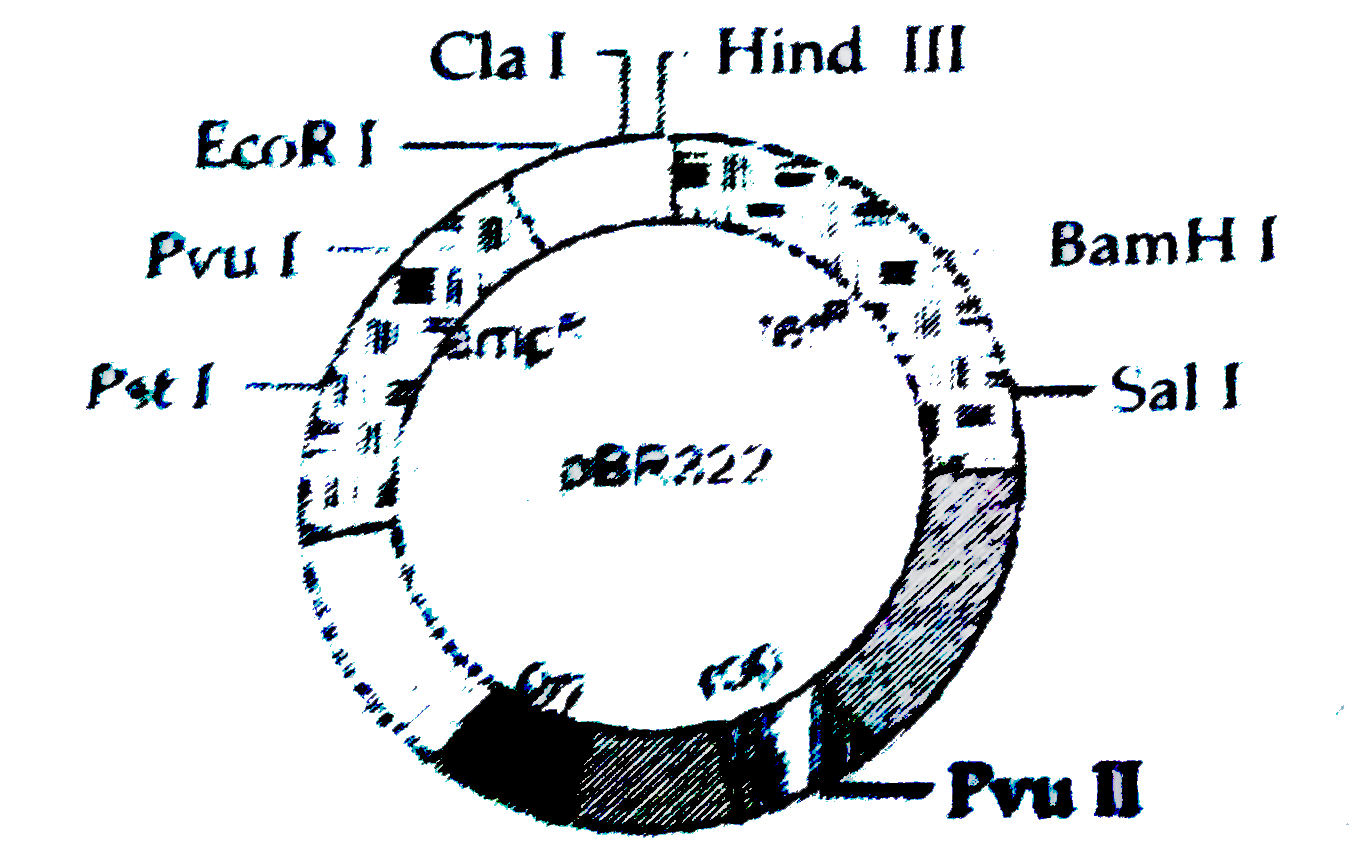Name the vector used for introducing gene for hirudin into Brassica napus seed plant.
Step-by-Step Solution:
1. Understanding the Question: The question asks for the name of the vector used to introduce the gene for hirudin into the Brassica napus plant.
2. Defining a Vector: A vector is a DNA molecule used to carry foreign genetic material into another cell. It acts as a vehicle for gene transfer.
3. Identifying the Type of Vector: In the context of plant biotechnology, one of the most common vectors used is the Ti plasmid (Tumor-inducing plasmid) from the bacterium Agrobacterium tumefaciens.
4. Gene of Interest: The gene for hirudin, which is a protein that prevents blood clotting, is isolated from the organism Hirudo medicinalis (the medicinal leech).
5. Insertion of Gene into Vector: The hirudin gene is inserted into the Ti plasmid vector, which is then used to transfer the gene into the Brassica napus plant cells.
6. Transformation Process: The Ti plasmid, now containing the hirudin gene, is introduced into the plant cells. Once inside, the plant cells can express the gene and produce the hirudin protein.
7. Conclusion: The vector used for introducing the gene for hirudin into Brassica napus is the Ti plasmid from Agrobacterium tumefaciens.
Final Answer: The vector used for introducing the gene for hirudin into Brassica napus is the Ti plasmid.
---
Topper's Solved these Questions
- BIOTECHNOLOGY AND ITS APPLICATIONSBOOK - AAKASH INSTITUTE ENGLISHCHAPTER - BIOTECHNOLOGY AND ITS APPLICATIONSEXERCISE - EXERCISE
20 Videos
- BIOTECHNOLOGY AND ITS APPLICATIONSBOOK - AAKASH INSTITUTE ENGLISHCHAPTER - BIOTECHNOLOGY AND ITS APPLICATIONSEXERCISE - ASSIGNMENT (SECTION - A) (OBJECIVE TYPE QUESTIONS)
25 Videos
- BIOTECHNOLOGY AND ITS APPLICATIONSBOOK - AAKASH INSTITUTE ENGLISHCHAPTER - BIOTECHNOLOGY AND ITS APPLICATIONSEXERCISE - ASSIGNMENT (SECTION - D) (ASSERTION - REASON TYPE QUESTIONS)
10 Videos
- BIOMOLECULESBOOK - AAKASH INSTITUTE ENGLISHCHAPTER - BIOMOLECULESEXERCISE - ASSIGNMENT (SECTION-D) Assertion-Reason Type Questions
10 Videos
- BIOTECHNOLOGY-PRINCIPLES AND PROCESSESBOOK - AAKASH INSTITUTE ENGLISHCHAPTER - BIOTECHNOLOGY-PRINCIPLES AND PROCESSESEXERCISE - ASSIGNMENT SECTION-D (Assertion-Reason Type Question)
10 Videos
Similar Questions
Hirudin gene inserted in Brassica napus was
View SolutionTobacco plants are damaged severely when infested with Meloidegyne incognitia. Name and explain the strategy that is adopted to stop this infestation.
(b) Name the vector used for introducing the nematode specific gene in tobacco plant.
View Solution
Knowledge Check
Study the following statements and select the incorrect ones.
(i) 'Bt' in 'Bt cotton' indicates that it is a genetically modified crop produced through biotechnology
(ii) The anticoagulant 'hirudin' is being produced from transgenic Brassica napus seeds
(iii) 'Flavr Savr' transgenic tomatoes remain fresh for a longer period than the normal tomato variety
(iv) Golden rice is a transgenic variety of Oryza sativa, which is rich in β-carotene and helps to prevent night blindness.A(i) onlyB(i) and (iv)C(ii) and (iii)D(i),(ii),(iii) and (iv)
Which vector is used to introduce genes into dicots ?
View SolutionWhich vector has employed for introducing nematode-specific genes in infected tobacco plants?
View SolutionName any two methods used to introduce recombinant DNA into host cell.
View SolutionName the vector used for transferring ADA-DNA into the recipient cells in humans. Name the recipient cells.
View Solution(i) Name the organism in which the vector shown in inserted to get the copies of the desired gene.
(ii) Mention the area labelled in the vector responsible for controlling the copy number of the inserted gene.
(iii) Name and explain the role of a selectable marker in the vector shown.

View SolutionName the terms used for
a. aquatic plants and
b. desert plants.
View SolutionGene responsible for synthesis of hirudin protein was introduced in :
View Solution